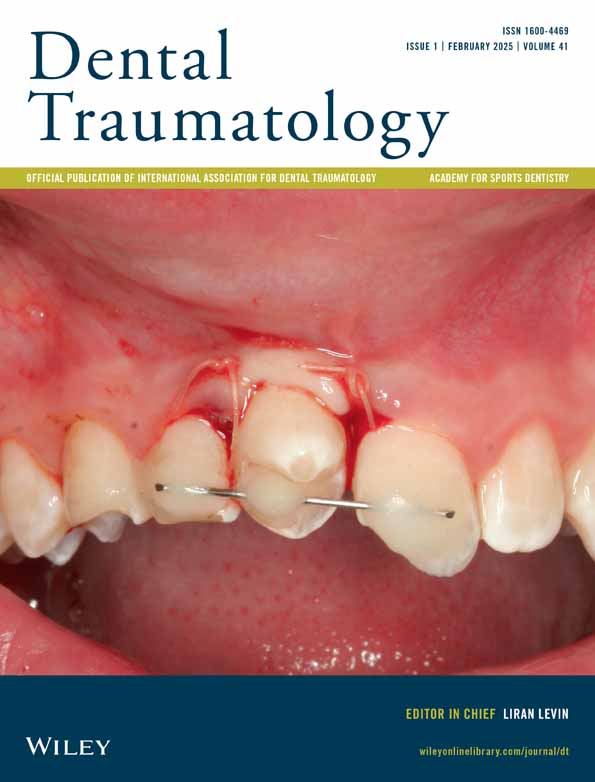Time-Dependent Morphological Changes in Traumatic Immature Teeth With Necrotic Pulps Following Regenerative Endodontic Treatment: A Retrospective Study
Funding: The authors received no specific funding for this work.
Manal Maree and Omri Nabriski contributed equally to this manuscript.
ABSTRACT
Background/Aim
Regenerative endodontic treatment is a promising approach for healing periapical lesions and continuous root maturation. Although previous studies have reported its outcomes, the dynamics of morphological changes over time remain unclear. Therefore, this study aimed to evaluate changes in the periapical status and root dimensions over a 60-month follow-up period.
Materials and Methods
The follow-up duration, periapical status changes, calcific barrier formation, degree of apical closure and radiographic root area changes were compared with those of the last follow-up in this retrospective study. Radiographic root area changes were calculated as the difference between the total root and total canal areas.
Results
Fifty-eight patients (81 teeth) underwent regenerative endodontic treatment during the study period, of whom 32 patients (36 teeth, 62%) were included. The survival and success rates of the treated teeth were 100% and 94.4%, respectively. All teeth developed a calcific bridge in the cervical third of the root canal, indicating the presence of vital tissue. Apical narrowing (partial or total) was observed in 75% of the cases. The root maturation stage affected the percentage increase in the radiographic root area. Teeth in Cvek stages II–III showed a higher radiographic root area increase than more mature teeth. All tooth radiographic root areas increased significantly in the initial 20 months of the treatment and moderately thereafter.
Conclusions
Regenerative endodontic treatment is a safe approach for traumatised immature teeth. The presence of a radiographic calcified bridge may be an early indication of treatment success. The main complete tooth morphological changes occur after approximately 20 months posttreatment. These findings may help clinicians better understand the time-dependent changes in the root morphology after treatment, improve the follow-up schedule and predict the progress of healing during follow-up visits.
Conflicts of Interest
The authors declare no conflicts of interest.
Open Research
Data Availability Statement
The data that supports the findings of this study are available in the Supporting Information of this article.




